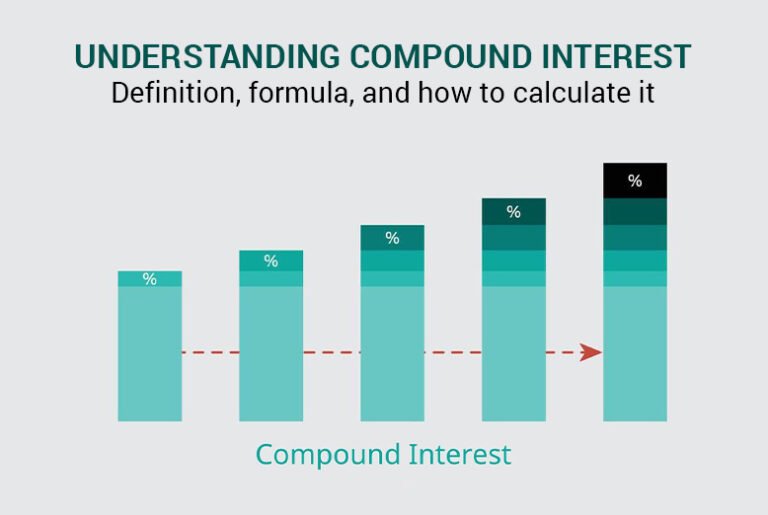Compound interest is a powerful financial concept that can accelerate wealth creation over time. It allows you to earn returns not just on your initial investment but also on the accumulated interest, creating a compounding effect. This ‘interest on interest’ can turn even small, consistent investments into substantial sums. Understanding how compound interest works is essential for investors, as it plays a crucial role in shaping mutual fund returns and achieving long-term financial goals.
Definition of compound interest
Compound interest is the process where interest is calculated not only on the initial principal amount but also on the accumulated interest from previous periods. This is different from simple interest, where interest is only calculated on the initial amount. The frequency of compounding can significantly affect the total interest earned on your investment.
The formula for compound interest
The mathematical formula for calculating compound interest is A = P (1 + r/n) (nt)
Where:
- A = The future value of the investment, including interest
- P = The principal investment amount (the initial deposit)
- r = The annual interest rate (in decimal form)
- n = The number of times that interest is compounded annually
- t = The number of years the capital is invested
How to calculate compound interest
While you can use the above formula to calculate compound interest manually, it can be tedious and time consuming. To make the process easier, you can make use of an online compound interest calculator instead.
For instance, if you want to calculate how much your mutual fund investment of Rs 1 lakh will amount to in five years with an annual return of 12%, you can simply enter these details into the compound interest calculator and get the estimate in a few seconds. In this case, your corpus would amount to about Rs 1.76 lakh at the end of the five-year period.
Compound interest in mutual fund investments
Mutual funds harness the power of compounding by reinvesting earnings to maximise growth. Your mutual fund investments are diversified across asset classes such as stocks and bonds through a Systematic Investment Plan (SIP) or lumpsum investment. The returns generated from the investments are reinvested, allowing your investments to grow at an exponential rate.
Factors affecting compound interest
Several factors influence how much your investments grow through compounding. Understanding these elements can help optimise your investment strategy.
1. Investment duration
The longer your money is invested, the more significant the compounding effect. Small investments made early can grow substantially over time.
2. Compounding frequency
The frequency of compounding—whether daily, monthly, or annually—affects your returns. More frequent compounding accelerates wealth accumulation, with monthly compounding typically yielding higher returns than annual compounding.
3. Interest rate
Higher interest rates lead to faster wealth growth. Even small increases in the rate can have a significant impact over time.
4. Additional contributions
Regular investments, such as SIPs, add to the principal and boost the compounding effect, helping your wealth grow faster.
5. Withdrawals and interruptions
Withdrawing funds prematurely disrupts compounding, limiting growth. Staying invested and reinvesting your returns maximises the power of compounding.
Conclusion
Now you understand how effective compound interest is for financial planning. The power of compounding can turn your seemingly small investments into a significant sum over time, especially when you invest in mutual funds. You can estimate your potential return through a compound interest calculator and make informed decisions about your investment strategy.
Also Read: Should You Reinvest or Withdraw FD Interest?



